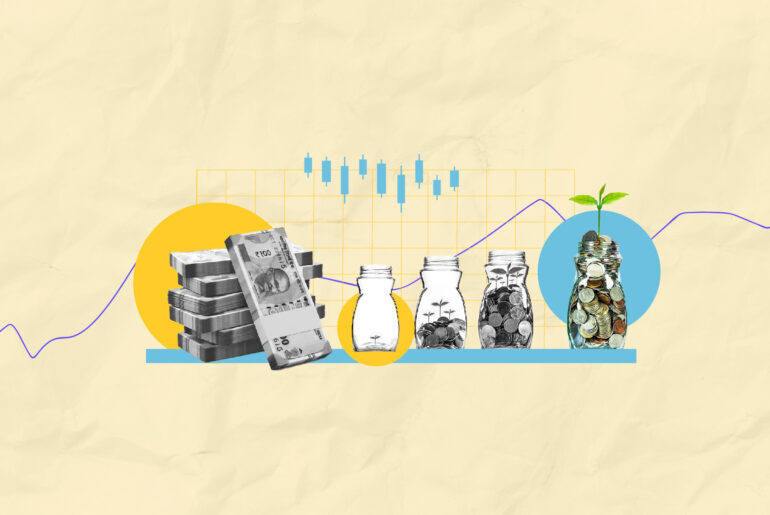Last Updated on May 24, 2022 by Aradhana Gotur
When investors perform fundamental analysis on a company, a number of ratios are looked at along with the financials, management and economic factors that influence the company. One of those ratios is the dividend yield ratio. This is a figure represented in a percentage form which portrays the amount of dividend distributed by the company out of the profits it makes in the year. In this article, we understand what dividend yield is and how we can calculate the same.
Table of Contents
What is dividend yield?
Dividend yield is a ratio that shows how much a company pays out in dividends each year in relation to its stock price. Dividend is an amount that companies pay to their shareholders, and this amount comes out of the profits the companies make in the year. These are paid on a per share basis, which means that a higher dividend amount will be paid to shareholders owning a higher number of shares. Some investors specifically seek out companies that pay dividends regularly. Usually, mature companies pay dividends more regularly as compared to smaller companies striving to grow. Here, it is important to note that companies are not obligated to give dividends. They may choose to reinvest all of the profits back into the business. It is completely at the discretion of the management.
How to calculate dividend yield?
Dividend yield = Annual dividends per share / Market price of the share
The higher this figure, the more attractive it is to the investors. The reciprocal of this is the Price-to-Dividends ratio, which can be calculated by dividing the price of a stock by its annual dividends.
To find the amount of dividend which has been paid, the following may be checked:
- The company’s annual reports usually have the figure of dividends paid by the company
- Multiply the quarterly dividend figures by 4, or add up the dividend amounts for all the quarters.
But it is important to note, this figure keeps changing and there may be changes in amounts when you follow different methods.
Pros and Cons of dividend yield
Pros
- Companies that pay dividends help investors earn through both dividends as well as capital gains.
- Many dividend-paying companies are mature companies that operate in defensive sectors and are able to protect investors in highly volatile circumstances.
- Since these companies are mature and earn profits consistently, they have substantial cash reserves in case of any unexpected events.
Cons
- There may be cases where the company management decides to pay dividends even when there are better growth prospects in investing them back into the business, thereby foregoing better growth opportunities.
- It can also be very misleading if stocks are selected majorly because of dividend yield figures. Not only can the dividend amounts be inaccurate, but the increase in dividend yield can also be due to a fall in the company’s share prices (since the denominator reduces).
The tax system in India
According to the Dividend Distribution Tax (DDT) Act that existed earlier, if dividend income is more than Rs 10 lakh, then individuals, HUF and firms are liable to pay dividend distribution tax at 10% of the exceeded amount. In 2020, the concept of DDT was brought to an end, and dividends are now taxed under shareholder’s income. This means any dividend you earn is added to your taxable income under ‘income from other sources’ and the income tax slab that you are eligible to get applied. For companies as well, the tax rates will be as per the income tax slabs between 25.17% and 34.94%.
There were certain amendments made in relation to tax on dividends, brought in primarily to reduce the burden of tax on companies. Section 80M has been reintroduced which permits for deduction for domestic companies that have declared dividends and are also in receipt of dividends from a different domestic company. The deduction is allowed in relation to the dividend received as long as the same amount is distributed as a dividend to shareholders one month before filing its income tax returns.
Now comes the concept of TDS deduction. The company paying off dividends will have to deduct TDS before distributing the dividends. It is important to note that these amounts for TDS are only deducted if the dividend income to a single shareholder is above Rs 5,000. The rates of tax deducted at source (TDS) are different for both residents and non-residents of India. For Indian residents, TDS is deducted at a rate of 10% whereas, for non-resident Indians, this rate is set at 20%. If the non-residential shareholders are beneficial owners, they can take the benefit of lower tax rates under applicable tax treaty with the country they reside in wherein the tax rates may vary between 5-15%.
Since amendments were made to the Income Tax Act, dividend distributor companies have to still pay dividend tax, the rate of which is 15%. So whatever is the dividend tax, it is charged at 15% and the leftover amount is distributed as dividend to the shareholders.
Conclusion
There are different needs and preferences of investors. While the younger generation might prefer sizable capital gains as returns for their investment in shares, some people who have a more conservative approach to investing might seek out dividends that can cover their regular expenses. Dividend yields then play an important role in telling investors and prospective investors how much of the profit the company is giving away as dividends. It is also an indication of how the company views growth prospects. Dividend yields also provide a peek into the historical stance of the company on dividends and let dividend-hunters know which companies are likely to give them better dividends. Nonetheless, it is important to construct your portfolio while keeping in mind the taxation policies.
- How To Declare Mutual Funds in ITR & Disclose Capital Gains in India? - Jun 6, 2025
- How To Sell or Exit Your Mutual Funds in India? - Jun 6, 2025
- Fund of Funds (FOF): Meaning, Types & Advantages - May 13, 2025





